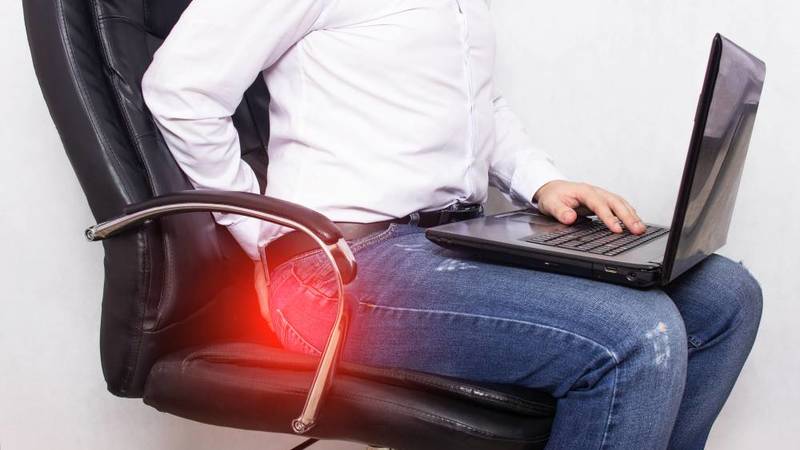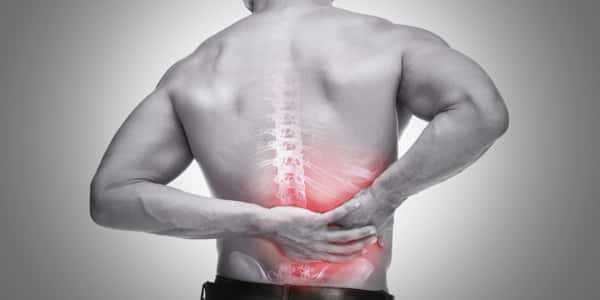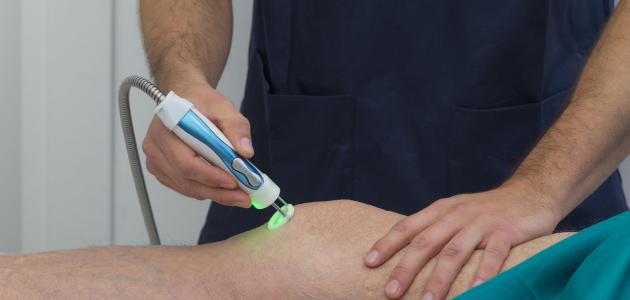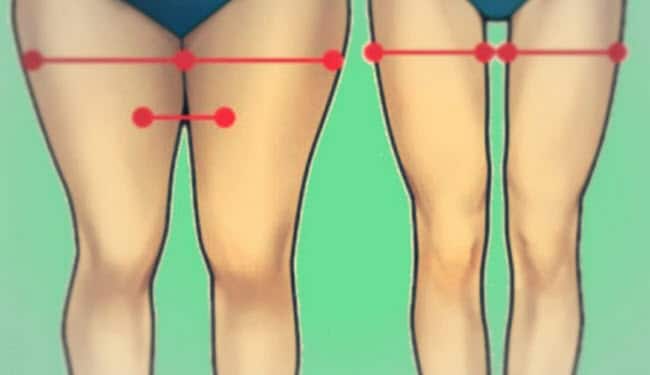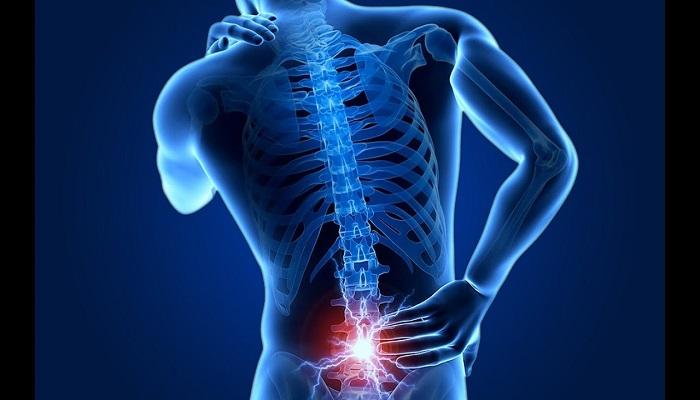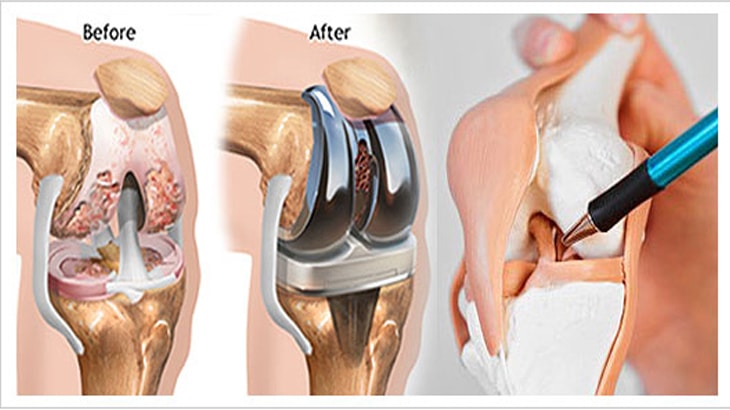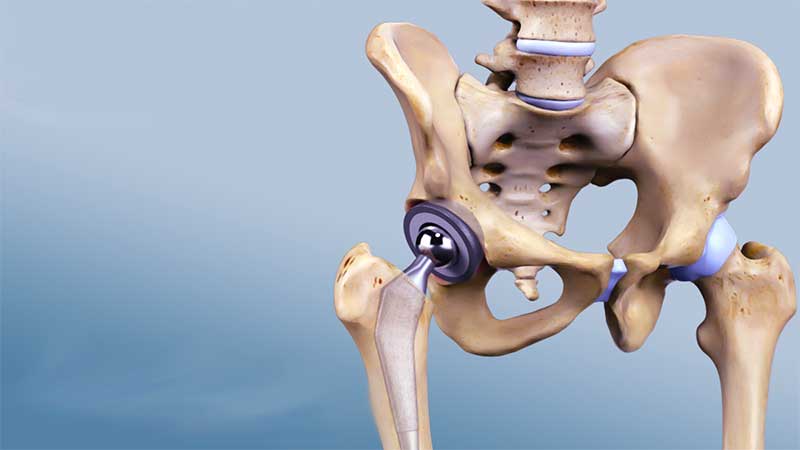Learn about the symptoms of cervical vertebrae and dizziness and how to get rid of them! Symptoms of Cervical Vertebrae and Dizziness
Symptoms of cervical vertebrae and dizziness
Cervical vertebrae issues and dizziness are health problems experienced by many people around the world. These symptoms can be caused by poor sitting or sleeping habits, which lead to inflammation of the neck vertebrae, causing headaches, dizziness, and pain in the upper part of the neck.
The first cervical vertebra, known as the atlas, carries the entire weight of the skull. When this vertebra is subjected to pressure or irritation, it may lead to nausea and vomiting, weakness, ear pain, tinnitus, concentration issues, pain in the upper part of the neck, and a reduced range of neck motion.
Many wonder if neck vertebrae can cause dizziness and imbalance. Indeed, some people suffer from neck pain and dizziness concurrently, which may be due to tense chest muscles. In this case, it is diagnosed and treated with vestibular therapy.
Neck stiffness is a painful condition caused by wear and tear on the cervical vertebrae. A person with neck stiffness may also experience vertigo, especially when the neck is subject to sudden movements such as a car braking. When diagnosing vertigo, it is first necessary to rule out other diseases that may be behind these symptoms.
Additionally, cervical vertebrae can cause dizziness, imbalance, heaviness in the head, continuous headaches, and burning in the eyes. Therefore, it is essential to consult a specialist doctor for the diagnosis and prescription of the appropriate treatment.
In general, it is important to follow healthy sitting and sleeping habits, practice suitable physical exercises to strengthen the neck muscles, and maintain their flexibility. It is also advisable to avoid sudden movements that can lead to neck vertebrae injury.
In conclusion, we must pay great attention to neck health and deal with any symptoms that may appear correctly, according to the guidance of specialized doctors. If any abnormal or persistent symptoms appear, it is necessary to consult a doctor for diagnosis and to determine the appropriate treatment.
Does cervical vertebrae inflammation cause dizziness and imbalance?
Cervical vertebrae inflammation is a condition that affects the spine in the neck area. Neck and back pain, numbness, and tingling in the shoulders and arms are among the prominent symptoms that may accompany this condition. Although the pain can last up to three months and may cause stiffness in the neck or lower back, dizziness and imbalance may also occur.
Conditions such as rheumatoid arthritis, meningitis, and cancer are examples of diseases that can cause neck pain. The pain may be due to musculoskeletal system issues, including the bones of the spine, muscles, and ligaments that support them.
Neck pain is one of the prominent symptoms associated with cervical spondylitis, and it may be acute or chronic and can spread to the shoulders and arms. The pain may arise from problems in the spine, including the spinal bones, muscles, and ligaments that support it.
As for dizziness and imbalance, some believe these may be a result of cervical spondylitis. Spinal canal stenosis within the spinal bones is one of the possible causes of these symptoms. When spinal canal stenosis occurs, it can affect the spinal cord and the surrounding nerves, leading to symptoms such as dizziness and imbalance. Patients may feel tightness in the body’s muscles, difficulty walking, and an inability to use the hand properly.
The impact of cervical spondylitis on dizziness and imbalance relates to its effect on the central nervous system and surrounding nerves. Cervical spondylitis may cause pressure on the nerves or spinal cord, affecting the nervous system’s function and leading to symptoms like dizziness and imbalance.
It is important to prevent cervical spondylitis and maintain overall spinal health. Care should be taken to maintain a correct posture while sitting, standing, and sleeping, and to practice appropriate exercises to strengthen the neck and back muscles, and to avoid loading the spine with heavy weights.
In conclusion, cervical spondylitis can cause neck and back pain, numbness, and tingling in the shoulders and arms, and may be accompanied by symptoms such as dizziness and imbalance. A doctor should be consulted to diagnose the condition accurately and determine the appropriate treatment.
What are the symptoms of cervical nerve inflammation?
Cervical nerve inflammation is a condition that causes various symptoms in the neck and surrounding areas. These symptoms may include numbness and weakness in the neck, and if nerve compression continues for an extended period without treatment, damage to the surrounding neck tissues may occur. These symptoms may be the result of a neck muscle strain due to stress or disc herniations or tension. There can also be other causes, such as temporomandibular joint syndrome.
Temporomandibular joint syndrome is one of the possible causes of cervical nerve inflammation. The symptoms of this condition are divided into three sections, where degeneration in the cervical vertebrae occurs without pressure on the nerves and spinal cord, causing pain in the neck and shoulder.
Other symptoms of cervical nerve inflammation include pain that typically worsens by holding the head in one position for long periods, such as driving or working on a computer. There may be spasms and contractions in the muscles and weakness in the ability to move the head. This may be accompanied by a sharp pain in the back, shoulders, arms, and legs. Other symptoms that can occur include pain, numbness, tingling, and muscle weakness.
Cervical vertebral compression and inflammation of the bones and joints in the neck are two other causes of neck nerve inflammation. The patient may also experience numbness and tingling in the lower part of the neck.
It is important that neck nerve inflammation is diagnosed by a specialist doctor to determine the potential causes of this condition. This may require additional examinations and tests such as X-rays or magnetic resonance imaging (MRI) to determine the extent of damage in the tissues surrounding the neck.
After diagnosing neck nerve inflammation, it can be treated in several ways. Treatment may include the provision of medication to relieve pain and swelling, recommendation of rest and avoidance of painful activities, application of ice or local heat, and physical therapy to strengthen the muscles and improve neck movement. In some more advanced cases, surgical treatment may be necessary.
It is crucial to consult a specialist doctor if symptoms of neck nerve inflammation appear, and not to delay treatment to avoid complications or permanent damage to the nerves and tissues surrounding the neck.
What are the symptoms of cervical spine compression?
Cervical spine compression on the spinal cord is a condition that can cause many symptoms and health problems. This compression occurs when the vertebrae in the cervical spine narrow or press on the spinal cord and surrounding nerves. This pressure can be due to many causes, including arthritis, age-related wear, previous injuries, muscle tension, structural abnormalities, disc disease, and spinal tumors.
The symptoms that may result from cervical spine compression on the spinal cord vary from person to person and depend on the degree and location of the compression. However, there are some common symptoms that people with cervical spine compression on the spinal cord may experience:
- Neck pain: The pain in the neck can be mild or sharp and persistent. The person may feel pain when touching the neck or when moving the head.
- Numbness and tingling: A person may feel numbness and tingling extending from the shoulder to the fingertips due to nerve root pathology in the neck. This numbness and tingling may be accompanied by pain.
- Increase in symptoms with head movement: Symptoms can worsen when moving the head or tilting it, and this may be accompanied by chronic headaches.
- Burning and radiating pain: A person may feel a burning sensation in the area of pressure, and the pain may spread to the arms and buttock area.
- Extreme fatigue and exhaustion: A person with cervical spine compression on the spinal cord may feel extreme fatigue and exhaustion, due to the negative impact on the nervous system.
- Radiating pain and tingling: Pain and tingling may appear in other areas of the body away from the neck, such as the back or upper limbs.
- Muscle weakness: A person with cervical spine compression may experience muscle weakness, which can affect the ability to perform daily activities.
It is important to consult a doctor if you are experiencing symptoms of neck vertebrae compression on the spinal cord. The doctor can diagnose the condition and determine the appropriate treatment, whether it be physical therapy, pain relief medications, muscle strengthening exercises, or in some cases, surgery.
In general, it is better to prevent the compression of the neck vertebrae on the spinal cord by maintaining a correct posture for the head and neck, avoiding sitting for long periods in uncomfortable positions, and performing appropriate exercises to strengthen muscles and improve flexibility. It is also recommended to avoid injuries and muscle strain and to maintain a healthy weight.
How do I get rid of neck dizziness?
Neck dizziness is a health issue that many people suffer from. It may accompany constant headaches or occur intermittently, causing imbalance and the feeling of movement when there is no actual motion. The cause behind this could be neck issues such as a neck injury during a car accident, severe roughness, or a herniated disc.
To get rid of neck dizziness, some simple procedures and measures can be followed. It may be helpful to use cold and warm compresses on the neck, as this can help alleviate pain and tension and improve blood circulation in the affected area. Additionally, some exercises that contribute to stretching the neck muscles can be performed under the supervision of a specialized trainer. It is also possible to adopt a proper and healthy body posture, and avoid sitting in a wrong way with bending.
Moreover, some medications and analgesics can be used to reduce pain and muscle spasms. Over-the-counter pain relievers such as ibuprofen and acetaminophen can be used. Muscle relaxants like tizanidine and cyclobenzaprine may also be employed. In the case of dizziness associated with neck problems, anti-dizziness medications such as scopolamine and meclizine can be used.
Furthermore, one can resort to physical therapy for neck mobility by a specialist. This includes exercises and techniques that help strengthen muscles and improve the flexibility of the neck. People may learn how to perform some of these exercises at home to help alleviate pain and improve the general condition of the neck.
It is important to consult a doctor before taking any medication or starting any kind of exercise, as the doctor can assess the condition and determine the most appropriate treatment for each case individually. The patient may be directed to undergo medical examination and necessary tests to determine the cause of the dizziness and the appropriate treatment.
In conclusion, care must be taken of the neck and preventive measures should be followed to maintain its health. It is important to avoid stress and psychological pressures, to exercise regularly, and to maintain a healthy body posture. If symptoms persist or worsen, it is necessary to consult a doctor for an assessment of the condition and guidance on appropriate treatment.
What are the symptoms of neck strain?
Neck strain is a common condition that affects many people of various ages. This disorder is characterized by spasms and stiffness in the neck muscles, causing pain and tension in this area. Neck strain can be the result of several factors, including emotional and physical stress, sports injuries, poor body posture while sitting or sleeping, exposure to cold, excessive physical activity, and chronic muscle tension.
Symptoms of neck strain can range from mild to severe and may include the following:
- Sharp pain along the arms: The sufferer may experience sharp pain spreading along the arms, affecting the ability to perform daily activities.
- Severe and very painful headache: Some may suffer from severe and annoying headaches accompanying the neck strain, which can be persistent for a long period.
- High fever: In some rare cases, the body’s temperature may rise, and severe fever may occur, requiring a doctor’s consultation if this happens.
- Nausea and vomiting: Some patients may experience nausea and vomiting due to neck strain, and it is advised to rest and drink fluids to avoid fatigue and dehydration.
- Problems with balance and movement: Neck strain can affect balance and movement, causing difficulty in performing daily activities normally.
- Recent exposure to an accident or injury: Neck strain may be the result of exposure to an accident or injury, such as a car accident or a fall on the head.
- Problems with the ability to control the bladder and bowel movements: Neck strain can affect the ability to control bowel movements and the bladder, causing difficulty urinating or constipation.
- Sudden pains, numbness, and tingling in the arms and legs: The sufferer may feel sudden pains, numbness, and tingling in the arms and legs due to neck strain, which can be disturbing and painful.
Many people with neck strain may also suffer from pain in the neck itself, which can extend to the shoulders. This disorder can also cause headache attacks. There may be tenderness in the muscles of the neck and shoulder in some people, causing the inability to move the neck fully or pain when moving it.
If you are suffering from symptoms of neck strain, you should consult a doctor for diagnosis and appropriate treatment guidance. Treatment may include taking pain relievers to alleviate pain and tension, applying ice or heat locally, and practicing appropriate physical exercises to strengthen neck muscles and improve flexibility. In more serious cases, treatment may require physical therapy, physiotherapy, or manual therapy.
In conclusion, neck health should be taken seriously, and a healthy lifestyle should be followed, including getting enough rest and sleep, exercising regularly, and reducing emotional and physical stress and strain. If symptoms persist or worsen, you should consult a doctor to assess the condition and direct you to the appropriate treatment.
Do cervical vertebrae affect the ear?
The cervical vertebrae are the group of bones that form the spine in the neck area. A disorder in these vertebrae can cause various symptoms such as neck, shoulder, and back pain, numbness in the hands and fingers, and difficulty moving.
However, there seem to be some misconceptions about the impact of cervical vertebrae on the ear. Although some people may experience ear pain and tinnitus (the sound that a person hears that does not come from an external source), there is no scientific evidence to prove a direct relationship between cervical vertebrae roughness and these symptoms.
Recent studies suggest that people with neck problems may be more prone to tinnitus. This may be due to a connection between the nerve endings in the neck vertebrae and the hearing centers in the brain. However, it should be understood that this connection does not necessarily mean that the cervical vertebrae are the main cause of tinnitus.
Ear problems and tinnitus are complex and multi-causal. Tinnitus may result from exposure to loud sounds, inflammation of the middle ear, or disorders in the inner ear. Aging and other diseases can also cause imbalances in the auditory nerves.
In addition, psychological factors and stress may influence the occurrence of tinnitus. Psychological stress and anxiety can increase the severity and frequency of symptoms.
It is worth noting that there is no specific cure for tinnitus, but some procedures can be followed to alleviate the symptoms. It is advisable to avoid exposure to loud sounds, maintain general health and physical fitness, and reduce stress and anxiety. Complementary treatments such as cognitive-behavioral therapy, meditation, and physical therapy may help improve the condition.
Therefore, although some studies suggest a possible link between cervical vertebrae and tinnitus, there is no conclusive evidence to prove this link. Therefore, we must be cautious in making medical decisions and final conclusions based on the currently available information.
What is the treatment for neck vertebrae?
Treatment of neck vertebrae is an important subject that concerns many people who suffer from neck and shoulder pain. The neck vertebrae are the first seven vertebrae in the spine and are a sensitive area prone to injury and wear. A herniated disc in the neck may result from the pressure of the discs, which act as shock absorbers, on the spinal cord and the nerves that leave the spinal cord.
Several methods are available for treating neck vertebrae pain, including physical therapy. Physical therapy includes exercises to strengthen the muscles of the back, neck, abdomen, and legs. You can also learn how to perform daily activities correctly to avoid exacerbating neck pain. Neck pain accompanied by a fever and headache indicates a type of acute inflammation, such as meningitis. Therefore, it is advisable to visit a doctor to determine the correct diagnosis and prescribe the appropriate treatment.
Anti-inflammatory medications are a common option for treating soft tissue neck pain. They can be used alone or in combination with a pain reliever such as paracetamol or Tylenol. Surgical treatment may require the removal of the compressing disc or a fusion surgery of the vertebrae with each other, called cervical or spinal fusion. These surgeries are the most common option in advanced and chronic cases of cervical vertebrae.
Success rates in treating neck vertebrae depend on several factors, including age and the extent of the condition’s neglect. If neck pain is not treated properly, it may sometimes lead to stiffness of the cervical vertebrae. Therefore, it is advised to consult with a doctor and start appropriate treatment early to avoid complications.
Surgical treatment for cervical disc herniation may be necessary in rare cases. Nowadays, neck pain complaints have become common among young people due to lifestyle changes and their excessive reliance on electronic devices. In addition to medication, physical therapy and the application of hot and cold compresses alternately can be used to alleviate pain and inflammation.
In conclusion, individuals suffering from neck vertebrae pain should adhere to doctors’ recommendations and prescribed treatments. It is also important to maintain proper body posture and avoid excessive strain on the neck. If pain persists or worsens, consulting a doctor to evaluate the condition and direct the necessary treatment is essential.
Can a neck disc lead to paralysis?
A neck disc is a condition that can cause neck pain and problems, and some might wonder if this condition can lead to paralysis. To clarify this point, we must understand what a neck disc is and its effects on the body. It occurs when the intervertebral discs in the spine in the neck region slip. This slippage can cause pressure on the surrounding nerves and tissues, leading to pain and inflammation. The pain and inflammation can restrict neck movement and cause numbness in the limbs.
Although a neck disc can cause severe pain and restriction in neck movement, it typically does not lead to paralysis. Paralysis is a condition that occurs when the nervous system is disrupted, and nerve signals can no longer reach the muscles, resulting in a loss of ability to move. However, muscle weakness and numbness in the areas supplied by the affected nerves may occur due to a neck disc. This weakness and numbness may affect the arms and hands but usually do not reach the level of complete paralysis.
Paralysis may occur in rare and advanced cases of neck disc when the nerves are severely compressed, and the communication between the nervous system and muscles is cut off. However, these cases are very rare and require urgent medical intervention. It is worth noting that there are other causes of paralysis in the neck, such as cervical disc degeneration and acute spinal injuries. These conditions can lead to nervous system damage and cause paralysis.
Therefore, it can be said that a neck disc rarely leads to paralysis, but it may cause weakness and numbness in the affected muscles. If you experience symptoms like these, it is best to consult your doctor to evaluate your condition and direct you to the appropriate treatment.
What is Cervical Dystonia?
Cervical dystonia, also known as spasmodic torticollis, is a painful condition that affects the neck muscles, causing them to spasm against a person’s will. This spasm results in the head being twisted or turned to one side. This condition can be treated by injecting botulinum toxin, a substance commonly used to smooth facial wrinkles, directly into the muscles affected by the cervical dystonia.
Cervical dystonia represents the muscle’s resistance to stretch in a resting state and plays a significant role in maintaining the body’s overall balance, resisting the forces of gravity, and other vital functions. Cervical dystonia is considered a rare disorder, affecting about 9 people out of every 100,000 around the world. Most cases seem to appear in adults. Unfortunately, there is no definitive cure for this condition yet.
The condition of cervical dystonia is characterized by involuntary and continuous contractions or periodic and intermittent spasms in the neck muscles, leading to abnormal twisting of the neck. Cervical dystonia is a rare condition that can affect individuals at any age but is more common in middle age and affects women more frequently.
Cervical dystonia is a health problem that causes involuntary contraction and spasm of the neck muscles, leading to the neck being deviated to one side or the back. Sometimes, cervical dystonia can be painful and cause abnormal and painful movements of the muscles.
Cervical dystonia is a pathological condition that causes involuntary and repeated muscle contractions. These contractions lead to deviation of the head and involuntary muscle movements, which can sometimes be painful.
In general, cervical dystonia can significantly affect people’s lives, as they suffer from continuous neck pain and abnormal head movements. This tension can affect the ability to perform daily activities, work, and social life.
Therefore, finding an effective treatment for cervical dystonia is essential to improve the quality of life for patients affected by this condition. Although there is no final cure for cervical dystonia to date, there are treatments available to alleviate symptoms and improve the overall condition of patients. These treatments include medication therapy, neurotherapy, physical therapy, and psychotherapy.
In summary, cervical dystonia is a painful and rare condition that affects the neck muscles, causing them to spasm against a person’s will. Those affected by this condition suffer from continuous neck pain and abnormal head movements. Although there is no final cure for this condition, there are treatments available to alleviate the symptoms and improve the quality of life for those affected.
The Best Doctor for Cervical Disc Treatment
Cervical disc problems are troublesome and painful conditions that significantly affect individuals’ lives. One of the best options for treating these issues is surgery, and in this article, we will talk about one of the best doctors specialized in cervical disc treatment, Dr. Amr Amal.
Dr. Amr Amal is a professor of orthopedic and cartilage surgery known for his high expertise in this field. Dr. Amr Amal is considered one of the best doctors specialized in cervical disc treatment, possessing extensive knowledge and long-standing experience in this domain.
Dr. Amr Amal is distinguished by his high skill level and the advanced techniques he employs in his surgical procedures. He relies on endoscopic technology for treating cervical discs, a modern and effective technique that aids in alleviating pain and restoring neck movement for patients.
The endoscopic cervical disc surgery involves the removal of damaged parts of the disc and cleaning the affected area. This operation is carried out with high precision using meticulous tools, which helps in avoiding side effects and reducing the recovery period.
After the surgery, Dr. Amr Amal recommends following certain guidelines and directions to maintain good results and speed up the recovery process. Patients are advised to avoid excessive strain on the neck, minimize over-bending for long periods, sit properly, avoid sudden and rapid neck movements, and not carry heavy weights. In addition, Dr. Amr Amal provides carefully written medical articles about the best ways to treat spine and neck problems, and methods for treating joint pain and knee issues without the need for surgery. Dr. Amr Amal is always keen to convey accurate information to patients and to provide them with appropriate treatment.
In summary, if you are looking for the best doctor for cervical disc treatment, Dr. Amr Amal is the ideal choice. He boasts high expertise and knowledge in this field and uses advanced techniques to ensure the best outcomes for patients. So, if your condition requires surgery or treatment for a cervical disc, Dr. Amr Amal is the best option you can rely on.


